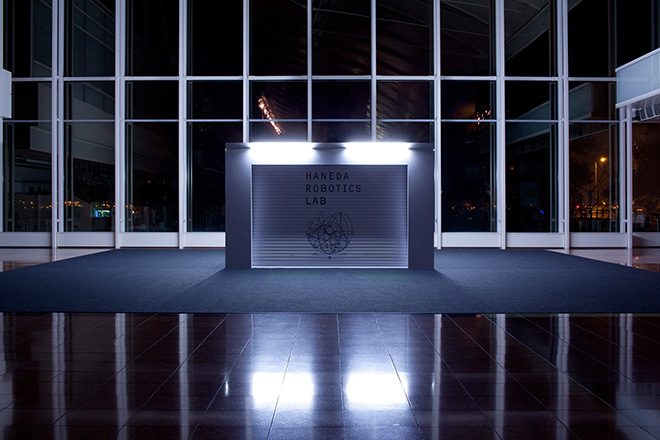Application theme
The application theme for 2017 is: security, transportation and translation. Robots usable in any one of these fields are searched for.
Applied robots will be strictly and fairly judged by the Haneda Robotics Lab office. The judgement will see whether the robot of your application can provide customers with security and safety, as well as create a healthy environment for the airport staff. Not only that, whether it can actually be installed in the airport building is also part of the evaluation. Robots which the Haneda Robotics Lab office determine inadequate for this project, including those unfittable in the closed space, having a risk of firing/smoking as well as affecting pacemakers will not be accepted. Those with illegality will also be refused.
* Even robots NOT complying to the theme may also be accepted, given it has all-round feasibility with promising results.
1. Security robot
Those which can be applied for effective and efficient security/security-related works in the Haneda Airport facilities are subject to this category.
In particular, we expect those robots to be able to keep tight airport security by: censoring/warning unidentified objects, detecting/dealing with abnormalities in the facilities, responding to medical crisis, addressing a lost child, undertaking evacuation guidance in case of emergency, extinguishing a fire, patrolling the airport ground and/or assisting any of these operations. Other robots such as autonomously controlled robots, patrolling drones and peripheral equipments to assist security guards are also subject to this public offer. We aim to enhance the efficiency of staff in security as well as workload reduction of security guards.
2. Logistics/Transportation related robot
Those which can be effectively applied for logistics works in the Haneda Airport facilities are subject to this category.
In particular, we expect those robots to be capable of assisting logistics in the airport such as porter-like service, warehouse operations, product inspections, on-site transport operations, conveyance of building materials and other devices to assist these operations. Other robots such as autonomously controlled robots and indoor tractors are also subject to this public offer. We aim to enhance the work efficiency, and reduce the workload of staff in logistics.
3. Translation related robot
Any robotic machines that can work on translation/communication in multiple languages inside Haneda Airport are subject to this category.
In particular, we assume they will work on operations as: multilingual guides, sales tasks, signages and document creations. Other robots such as automated devices responding in multiple languages, translation machines to assist staff, as well as other software systems that work on computer/cell phones are also subject to this public offer. We aim to enhance the work accuracy and workload reduction of airport staff, regarding communication in foreign languages.
Application procedure & condition
For details, please check this file(.zip file)
* Documents are Japanese only.































